Description
Monstera deliciosa, also known as the Swiss Cheese Plant, is a highly popular tropical houseplant renowned for its large, glossy, deeply-lobed leaves. As it matures, the plant develops characteristic holes or “fenestrations” in its leaves, which give it a unique, sculptural appearance. Native to the tropical rainforests of Central and South America, Monstera deliciosa thrives in humid environments and is well-suited for both novice and experienced plant enthusiasts due to its hardiness and adaptability.
- Full Botanical Name: Monstera deliciosa
- Common Names: Swiss Cheese Plant, Monsteria, Fruit Salad Plant
- Country and/or Region of Origin: Native to tropical regions of Central and South America
- Growing Conditions in Native Habitat: Grows as an epiphyte in tropical rainforests, receiving filtered light under the canopy and thriving in humid, well-draining soils
- Care Guide:
- Light: Prefers bright, indirect light. Too much direct sunlight can scorch the leaves, while too little light can stunt its growth and reduce fenestration. Keep it in a bright spot with filtered light for best results.
- Ideal Room: Ideal for living rooms, kitchens, or offices with indirect light and moderate to high humidity. Its large size makes it perfect for spacious areas, while its striking foliage makes it a natural focal point.
- Feeding: Fertilize once a month during the growing season (spring to summer) with a balanced, diluted liquid fertilizer. Reduce feeding during the fall and winter months when the plant is not actively growing.
- Humidity: Prefers high humidity. Regular misting, using a humidity tray, or placing it in a humid environment like a bathroom can help it thrive. A humidifier can also be beneficial, especially in drier indoor conditions.
- Ideal Temperature: Best kept between 65°F and 80°F (18°C to 27°C). Protect from cold drafts and temperatures below 50°F (10°C), as it is sensitive to frost.
- Watering: Water when the top inch of soil feels dry. Ensure the plant is in well-draining soil, as overwatering can lead to root rot. Let the soil dry slightly between waterings, but avoid letting it dry out completely.
- Pet/Child Safe: Toxic to pets and children if ingested. Keep out of reach of animals and young children to prevent accidental ingestion, which can cause digestive upset or irritation.
- Soil Type: Use a well-draining potting mix, such as one formulated for houseplants or tropical plants. Adding perlite or orchid bark can further improve drainage and aeration for healthy root growth.
- Propagation: Propagate by stem cuttings. Take a healthy cutting with at least one leaf and a node, and root it in water or well-draining soil. Once roots have developed, transplant the cutting into a new pot.
- Eventual Height and Spread: Typically grows up to 8-10 feet (240-300 cm) tall and 3-6 feet (90-180 cm) wide when grown indoors, making it an excellent choice for large spaces or as a statement plant in any room.
- Growth Rate: Fast-growing, particularly in the warmer months. It can quickly fill up space and produce large, dramatic leaves, making it a rewarding plant to care for.
- Pests and Treatment: Generally resistant to pests but may occasionally attract mealybugs, aphids, or spider mites. Treat infestations with insecticidal soap or neem oil to keep the plant healthy.
- Repotting: Repot every 1-2 years or when the plant becomes root-bound. Choose a pot that is slightly larger than the current one to allow healthy root growth, and ensure the pot has good drainage to prevent water retention.
- Pruning: Prune dead or yellowing leaves regularly to maintain the plant’s appearance. Pruning also helps shape the plant and encourages new growth, especially for larger plants that may become leggy.
- Air Purification: Known for its air-purifying qualities, Monstera deliciosa helps remove toxins such as formaldehyde, benzene, and trichloroethylene from indoor environments, improving air quality and creating a healthier living space.
- Folklore: Monstera deliciosa is often associated with prosperity, good luck, and vitality. In some cultures, it is believed to bring positive energy and protection into the home, making it a popular plant for feng shui and interior design.


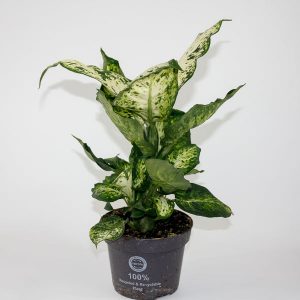
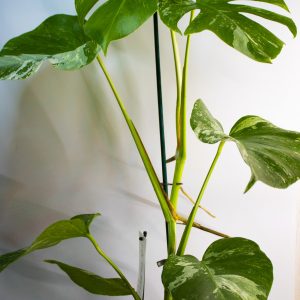

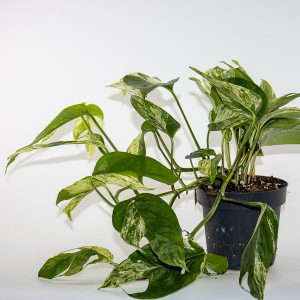
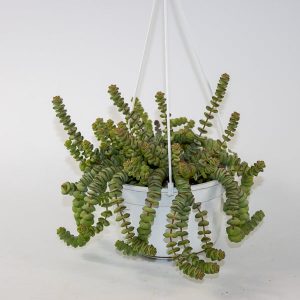
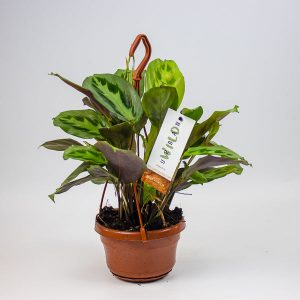

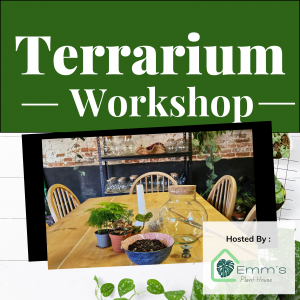

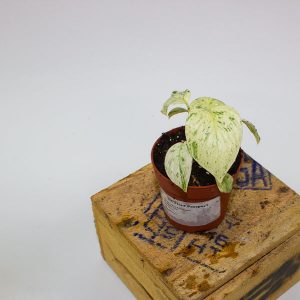
Reviews
There are no reviews yet.